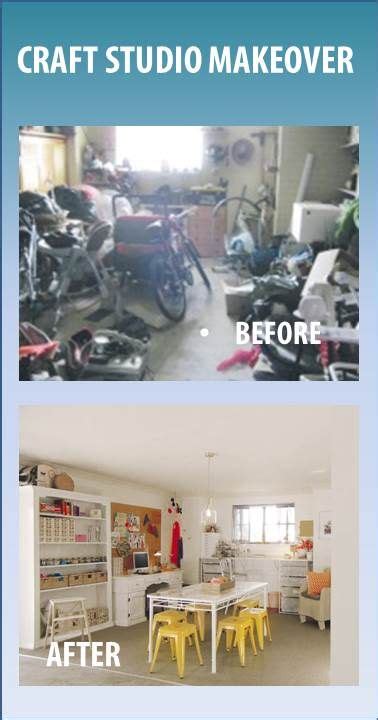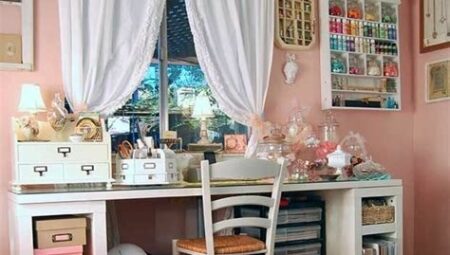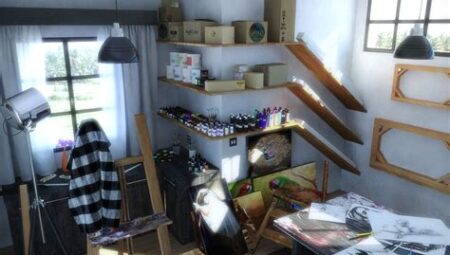Are you looking to finally create the hobby room of your dreams? Whether you’re an artist, crafter, or DIY enthusiast, having a dedicated space for your creative pursuits can make all the difference. In this blog post, we’ll explore the art of hobby room décor and how to unleash your creative side through thoughtful design and organization. From choosing the perfect color palette to adding personal touches with DIY decorations, we’ll cover everything you need to know to transform your hobby room into a functional and inspiring workspace. Get ready to learn about organizing your supplies and materials, creating a layout that maximizes productivity, and displaying and showcasing your creations. Let’s dive in and turn your hobby room into a haven for creativity and innovation.
Choosing the Perfect Color Palette
When it comes to choosing the perfect color palette for your creative projects, there are a few key factors to consider. First and foremost, think about the mood or feeling you want to evoke with your work. Are you aiming for a serene and calming aesthetic, or do you want to create something bold and energetic? Once you have a clear vision in mind, start exploring different color combinations that align with your goals.
Another important aspect to consider is the overall theme or concept of your project. Whether you’re designing a piece of art, a room in your home, or a marketing campaign, the color palette should reflect the intended message. For example, if you’re working on a nature-inspired project, you might gravitate towards earthy tones and natural hues. On the other hand, a modern and avant-garde project might call for a more minimalist and monochromatic color palette.
It’s also helpful to consider the psychological and cultural associations of different colors. Certain hues have been known to elicit specific emotional responses, so it’s important to be mindful of this when choosing a color palette. Additionally, different cultures may have varying interpretations of color symbolism, so if you’re creating something with a global audience in mind, it’s important to research these cultural nuances.
Lastly, don’t be afraid to experiment and think outside the box when choosing a color palette. While there are certainly tried-and-true combinations that work well, there’s also room for innovation and unexpected pairings. By being intentional and thoughtful in your selection process, you can create a color palette that truly elevates your creative work.
Organizing Your Supplies and Materials
When it comes to organizing your supplies and materials for your creative projects, having a system in place can make a world of difference. Whether you’re a painter, a crafter, or a DIY enthusiast, keeping your supplies organized can help streamline your creative process and make it more enjoyable.
One of the first steps in organizing your supplies is to take an inventory of what you have. This can help you see what you already have on hand and what you may need to purchase. Once you have a clear understanding of your inventory, you can start to create designated spaces for each type of material or supply. This can be done using storage bins, shelves, or drawers, depending on the size and type of supplies you have.
Another important aspect of organizing your supplies is to keep them easily accessible. It can be frustrating to have to dig through piles of materials to find what you need, so having a system in place that allows for easy access to your supplies can save you time and hassle. Consider labeling your storage containers or utilizing clear bins so that you can easily see what is inside without having to open every container.
Finally, it’s important to regularly reassess and reorganize your supplies as your collection grows or changes. As you acquire new materials or finish old ones, make sure to update your inventory and adjust your storage systems as necessary. By staying on top of your organization, you can create a more efficient and inspiring creative space for yourself.
Creating a Functional and Inspiring Layout
When it comes to creating a functional and inspiring layout for your crafting space, there are a few key elements to consider. First and foremost, you’ll want to think about the flow of the room. Consider how you move around the space and where you typically work. It’s essential to have easy access to all of your supplies and tools, so organizing your space in a way that makes sense for your workflow is crucial.
Another important aspect of creating a functional and inspiring layout is the use of natural light. Natural light can make a huge difference in how you feel while working on your projects. If possible, try to position your workspace near a window or in a well-lit area of your home. This can help to boost your mood and productivity while crafting.
In addition to the flow of the room and natural light, consider adding some personal touches to your crafting space. Whether it’s a gallery wall of your favorite creations, a vision board to inspire your creativity, or a cozy area for reading and brainstorming, these small additions can make a big impact on the overall feel of your space.
Finally, don’t be afraid to experiment with different layouts until you find the perfect setup for your needs. Your crafting space should be a reflection of your personality and creativity, so take the time to create a functional and inspiring layout that works for you.
Adding Personal Touches with DIY Decorations
One of the most satisfying aspects of crafting is adding personal touches to your creations with DIY decorations. Whether you’re making handmade cards, scrapbook pages, or home decor, incorporating homemade decorations can elevate your projects to the next level. With a few simple materials and a touch of creativity, you can make your projects truly unique and special.
When brainstorming ideas for DIY decorations, consider incorporating elements that hold personal significance to you or the recipient of your creation. For example, if you’re making a scrapbook for a friend who loves the outdoors, you could incorporate pressed flowers, twigs, or small photos of natural landscapes into your designs. These personalized elements add a sentimental touch and show that you put thought and care into the project.
Another way to add personal touches with DIY decorations is to customize the colors, patterns, and styles to reflect your or the recipient’s tastes. Whether you’re creating handmade ornaments, embellishments, or decorative elements, choosing color schemes, materials, and designs that resonate with the intended recipient can make your creations even more meaningful.
DIY decorations also provide an opportunity to repurpose or upcycle materials, adding an eco-friendly and sustainable aspect to your projects. By using materials that might otherwise be discarded, such as fabric scraps, bottle caps, or old jewelry, you can give new life to overlooked items and infuse your creations with character and charm.
Displaying and Showcasing Your Creations
When it comes to displaying and showcasing your creations, the key is to find the perfect balance between highlighting your work and creating an inviting space for your audience. One important aspect to consider is the placement of your creations. You want to make sure that they are easily visible and accessible, but also not overwhelming. Consider using shelves, stands, or display cases to give your creations the spotlight they deserve.
Another important factor is the lighting of your display area. Proper lighting can make a huge difference in how your creations are perceived. Natural light is always the best option, so try to position your display area near a window to take advantage of this. If natural light is not available, consider using soft, warm artificial light to create an inviting atmosphere.
It’s also crucial to think about the organization of your display. Group similar creations together to create a cohesive look, and consider using props or decorative elements to add visual interest. This will not only make your display more visually appealing, but it will also help to tell a story and create a connection with your audience.
Lastly, don’t forget to consider the feedback of your audience. Pay attention to how people interact with your creations and make adjustments accordingly. Their input can be valuable in helping you create a more effective and engaging display.
Frequently Asked Questions
How can I choose the perfect color palette for my hobby room?
Answer for related question
What are some tips for organizing supplies and materials in my hobby room?
Answer for related question
How can I create a functional and inspiring layout in my hobby room?
Answer for related question
What are some ideas for adding personal touches with DIY decorations in my hobby room?
Answer for related question
How can I effectively display and showcase my creations in my hobby room?
Answer for related question
What are some creative ways to store and organize hobby items in a small space?
Answer for related question
How do I balance aesthetics and functionality when decorating my hobby room?
Answer for related question



